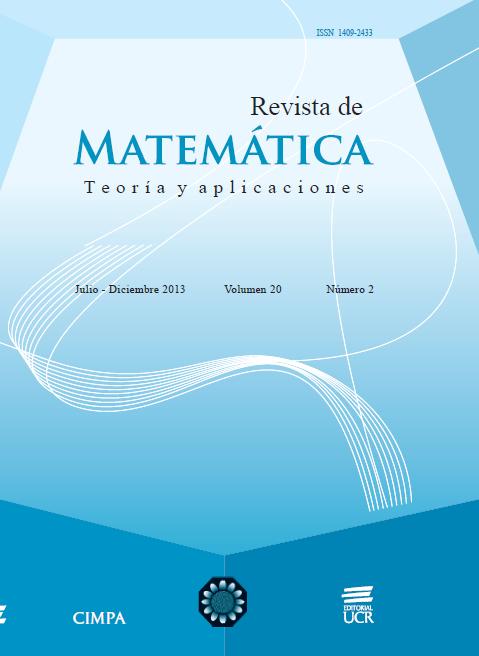Resumen
Un método para generar modelos de galaxias elípticas consiste en partir de un sistema de partículas con una configuración adecuada y seguir su evolución con un código de N-cuerpos hasta que alcanza el equilibrio. En trabajos anteriores hemos utilizado el código de L.A. Aguilar para generar modelos tanto no cuspidales como cuspidales, ofreciendo los segundos una mejor representación de las galaxias elípticas. Sin embargo, el método propuesto por Hernquist & Ostriker es más adecuado para los casos con cúspides centrales, puesto que utiliza una expansión del potencial en funciones radiales que ya tiene caracter cuspidal. Aquí consideramos dos modelos, uno no cuspidal y otro cuspidal, obtenidos con el método de Aguilar y cuyos potenciales ajustamos ahora con la expansión de Hernquist & Ostriker. Obtuvimos las ecuaciones variacionales correspondientes y las empleamos para determinar los exponentes de Lyapunov de órbitas ya estudiadas con el método de Aguilar y separar las caóticas. Las ́orbitas regulares las clasificamos mediante el análisis de sus frecuencias orbitales. Presentamos una comparación de los resultados obtenidos con los dos métodos para ambos tipos de órbitas.
Citas
Aguilar, L.A.; Merritt, D. (1990) “The structure and dynamics of galaxies formed by cold dissipationless collapse”, Astrophysical Journal 354: 33–51.
Aquilano, R.O.; Muzzio, J.C.; Navone, H.D.; Zorzi, A.F. (2007) “Orbital structure of self–consistent triaxial stellar systems”, Celestial Mechanics and Dynamical Astronomy 99 (4): 307–324.
Binney, J; Tremaine, S. (1987) Galactic Dynamics. Princeton University Press, Princeton, New Jersey.
Carpintero, D.D.; Wachlin, F.C. (2006) “Sensitivity of the orbital content of a model stellar system to the potential approximation used to describe it”, Celestial Mechanics and Dynamical Astronomy 96(2): 129–136.
Crane, P.; Stiavelli, M.; King, I.R. Deharveng, J.M.; Albrecht, R.; Barbieri, C.; Blades, J.C.; Boksenberg, A.; Disney, M.J.; Jakobsen, P.; Kamperman, T.M.; Machetto, F.; Mackay, C.D.; Paresce, F.; Weigelt, G.; Baxter, D.; Greenfield, P.; Jedrzejewski, R.; Nota, A.; Sparks, W.B. (1993) “High resolution imaging of galaxy cores”, The Astronomical Journal 106 (4): 1371–1393.
Hernquist, L. (1990) “An analytical model for spherical galaxies and bulges”, Astrophysical Journal 356: 359–364.
Hernquist, L.; Ostriker, J.P. (1992) “A self–consistent field method for galactic dynamics”, Astrophysical Journal 386: 375–397.
Huang, S.; Dubinsky, J.; Carlberg, R.G. (1993) “Orbital deflections in N-body systems”, Astrophysical Journal 404: 73–80.
Kalapotharakos, C.; Voglis, N. (2005) “Global dynamics in self–consistent models of elliptical galaxies”, Celestial Mechanics and Dynamical Astrononomy 92 (1–3): 157–188.
Moller, P.; Stiavelli, M.; Zeilinger, W.W. (1995) “Core properties of elliptical galaxies- I. A northern hemisphere sample at high resolution”, Mon. Not. Royal Astron. Soc. 276: 979–1002.
Muzzio, J.C. (2006) “Regular and chaotic orbits in a self-consistent triaxial stellar system with slow figure rotation”, Celestial Mechanics and Dynamical Astronomy 96(2): 85–97.
Muzzio, J.C.; Carpintero, D.D.; Wachlin, F.C. (2005) “Spatial structure of regular and chaotic orbits in a self-consistent triaxial stellar system”, Celestial Mechanics and Dynamical Astronomy 91 (1–2): 173–190.
Muzzio, J.C.; Navone, H.D.; Zorzi, A.F. (2009) “Orbital structure of self-consistent cuspy triaxial stellar systems”, Celestial Mechanics and Dynamical Astronomy 105(4): 379–395.
Napolitano, N.R.; Capaccioli, M.; Romanowsky, A.J.; Douglas, N.G.; Merrifield, M.R.; Kuijken, K.; Arnaboldi, M.; Gerhard, O.; Freeman, K.C. (2005) “Mass-to-light ratio gradients in early-type galaxy haloes”, Mon. Not. Royal Astron. Soc. 357: 691–706.
S̆idlichovský, M.; Nesvorný, D. (1997) “Frequency modified Fourier transform and its application to asteroids”, Celestial Mechanics and Dynamical Astronomy 65: 137–148.
Udry, S.; Pfenniger, D. (1988) “Stochasticity in elliptical galaxies”, Astronomy and Astrophysics 198 (1–2): 135–149.
##plugins.facebook.comentarios##

Esta obra está bajo una licencia internacional Creative Commons Atribución-NoComercial-CompartirIgual 4.0.
Derechos de autor 2013 Hugo D. Navone, Alejandra F. Zorzi





